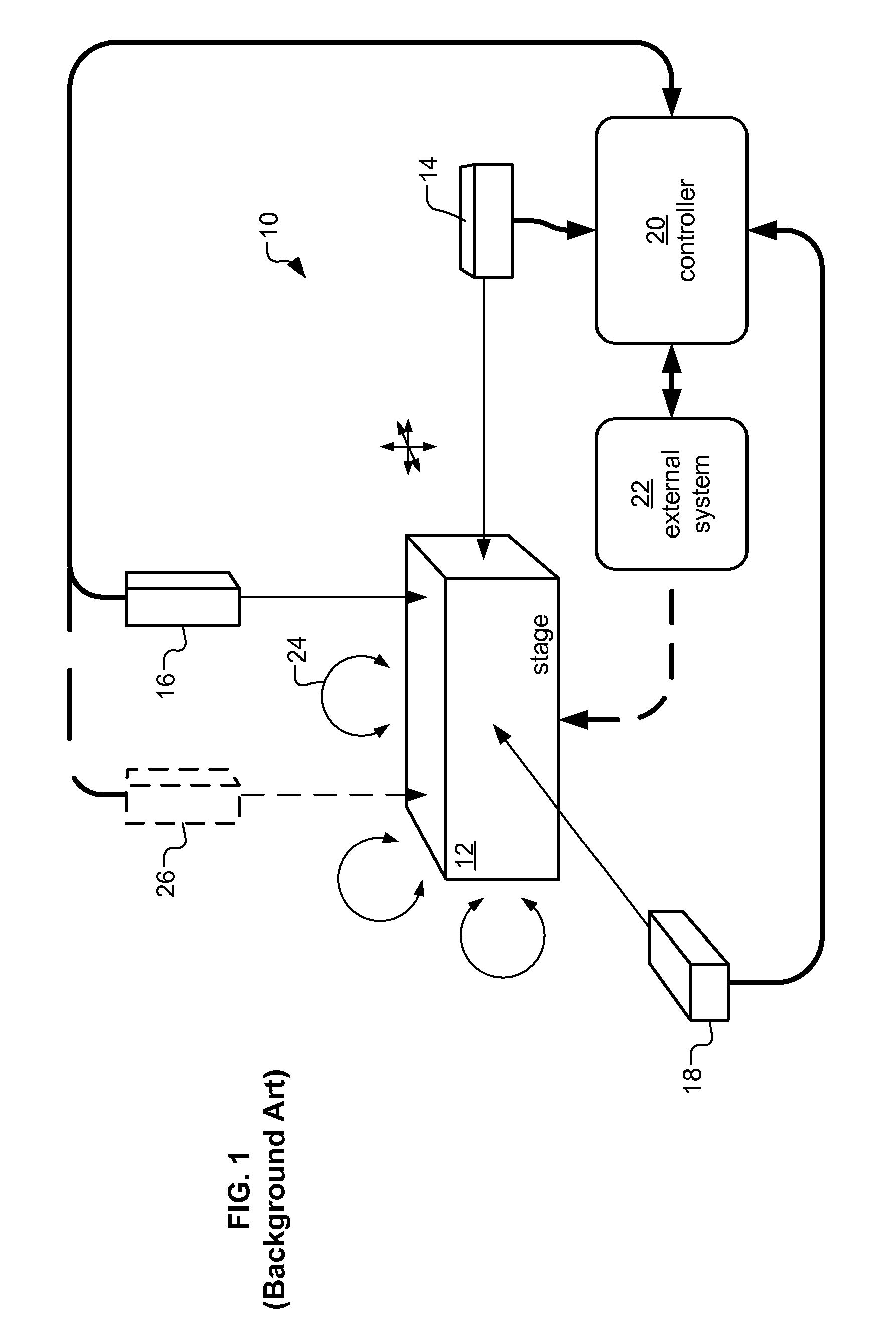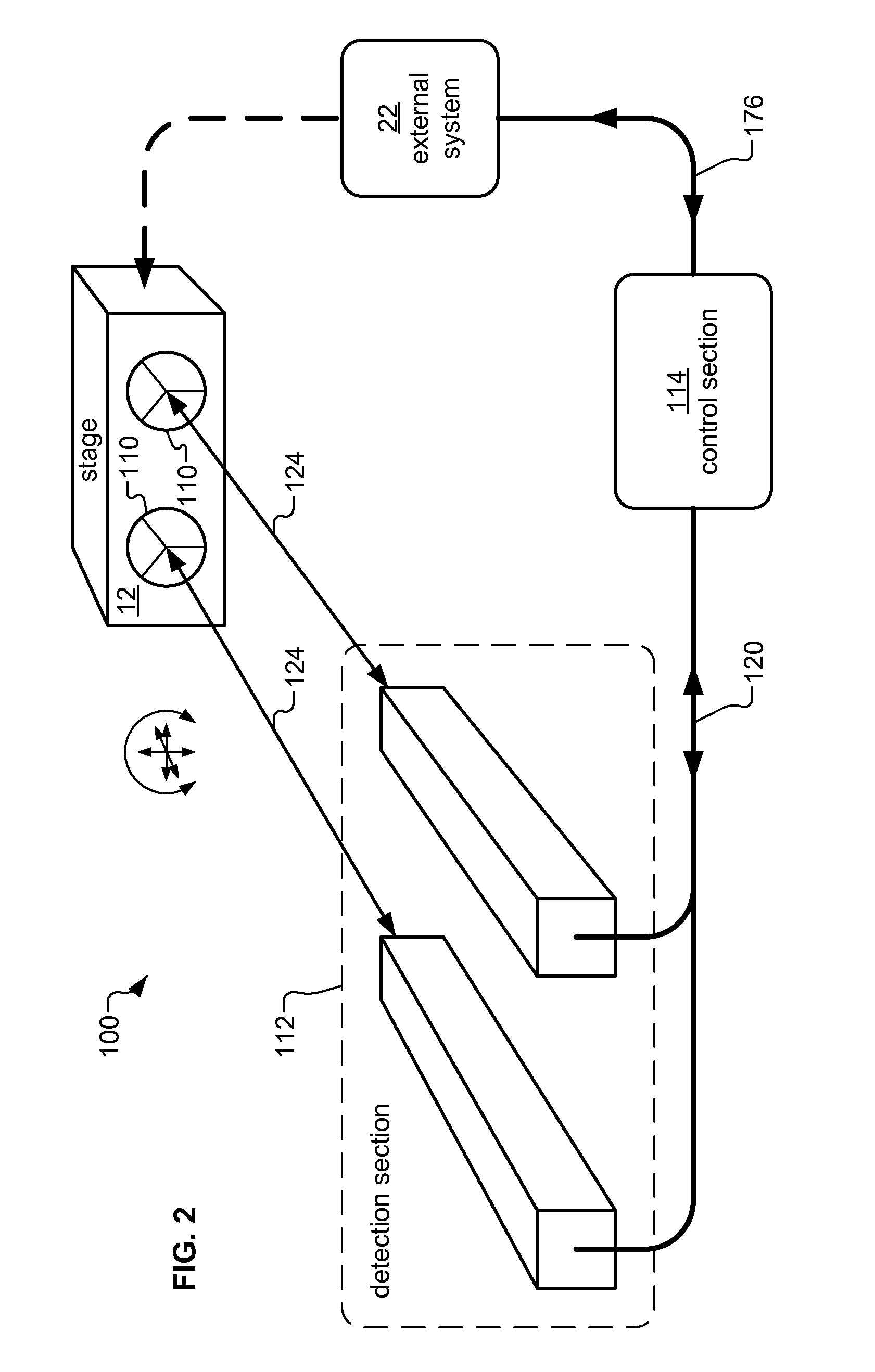Rotation and translation measurement
a technology of rotation and translation measurement and positional characteristics, applied in the field of optical measurement, can solve the problems of increasing the cost of detector hardware, increasing the cost of equipment, and unable to accurately detect positional characteristics, so as to achieve accurate position measurement, accurate measurement position, and the effect of speeding up the measurement speed
- Summary
- Abstract
- Description
- Claims
- Application Information
AI Technical Summary
Benefits of technology
Problems solved by technology
Method used
Image
Examples
Embodiment Construction
[0032] A preferred embodiment of the present invention is a position determining system (hereinafter “PDS”). As illustrated in the various drawings herein, and particularly in the views of FIGS. 2 and 5, the inventive device is depicted by the general reference character 100. Where appropriate, reference numbers are reused in the figures.
[0033]FIG. 2 depicts a preferred embodiment of the inventive PDS 100 in a generic usage scenario for determining positional information about a typical movement stage 12, such as that of FIG. 1 (background art). Retroreflective targets 110 are mounted on the movement stage 12; a detection section 112 is provided to optically sense information about the retroreflective targets 110; and a control section 114 is provided to control the operation of the PDS 100 and to communicate with an external system 22. The movement stage 12 and the external system 22 are not formally parts of the inventive PDS 100. As discussed with respect to FIG. 1 (background a...
PUM
| Property | Measurement | Unit |
|---|---|---|
| frequency | aaaaa | aaaaa |
| frequency | aaaaa | aaaaa |
| frequency | aaaaa | aaaaa |
Abstract
Description
Claims
Application Information
 Login to View More
Login to View More - R&D
- Intellectual Property
- Life Sciences
- Materials
- Tech Scout
- Unparalleled Data Quality
- Higher Quality Content
- 60% Fewer Hallucinations
Browse by: Latest US Patents, China's latest patents, Technical Efficacy Thesaurus, Application Domain, Technology Topic, Popular Technical Reports.
© 2025 PatSnap. All rights reserved.Legal|Privacy policy|Modern Slavery Act Transparency Statement|Sitemap|About US| Contact US: help@patsnap.com



